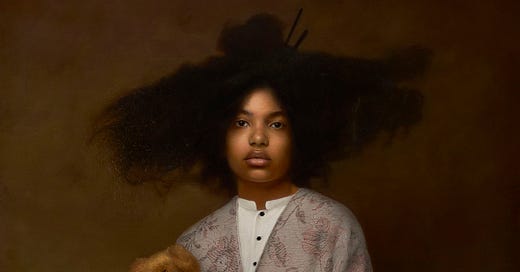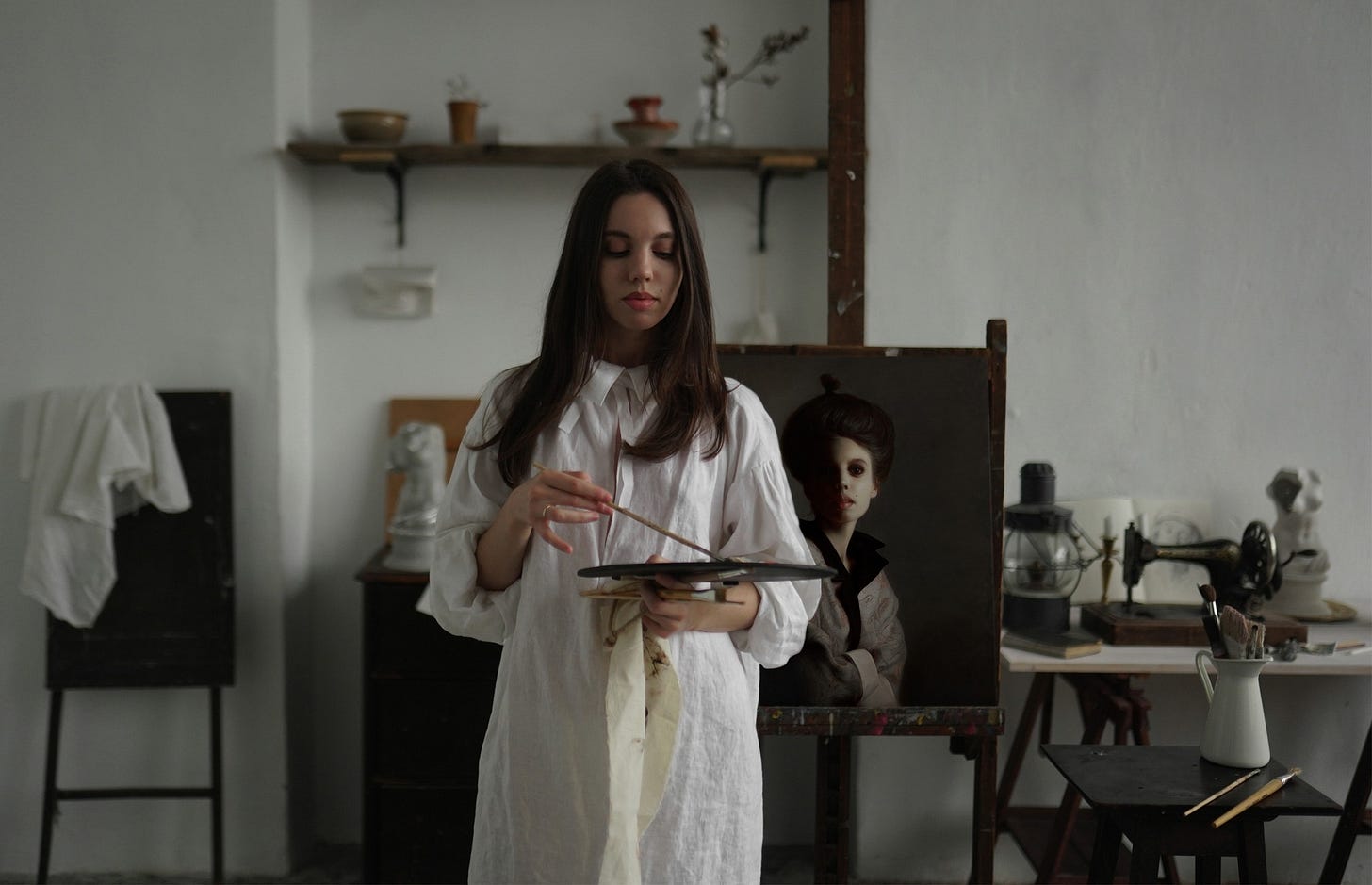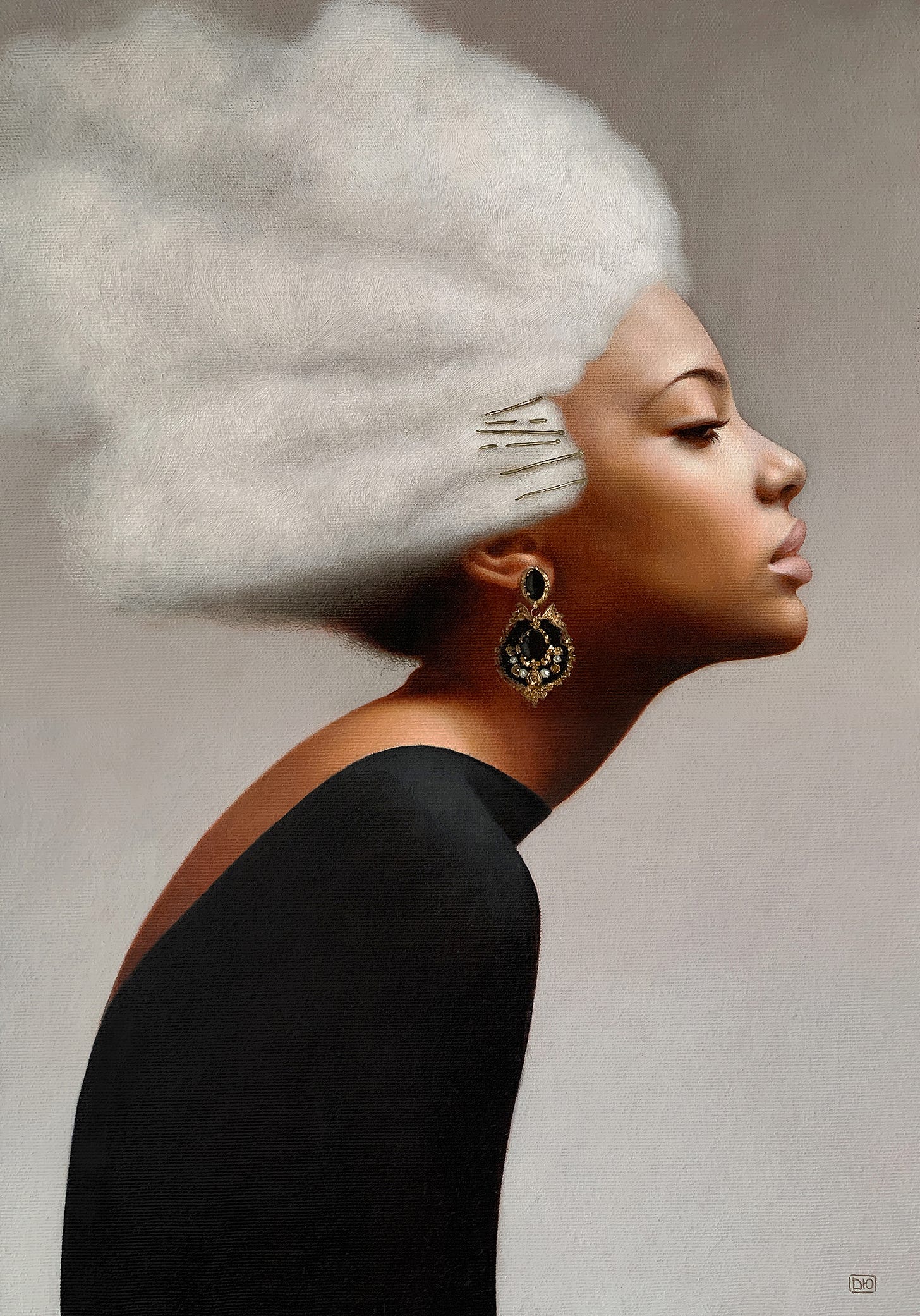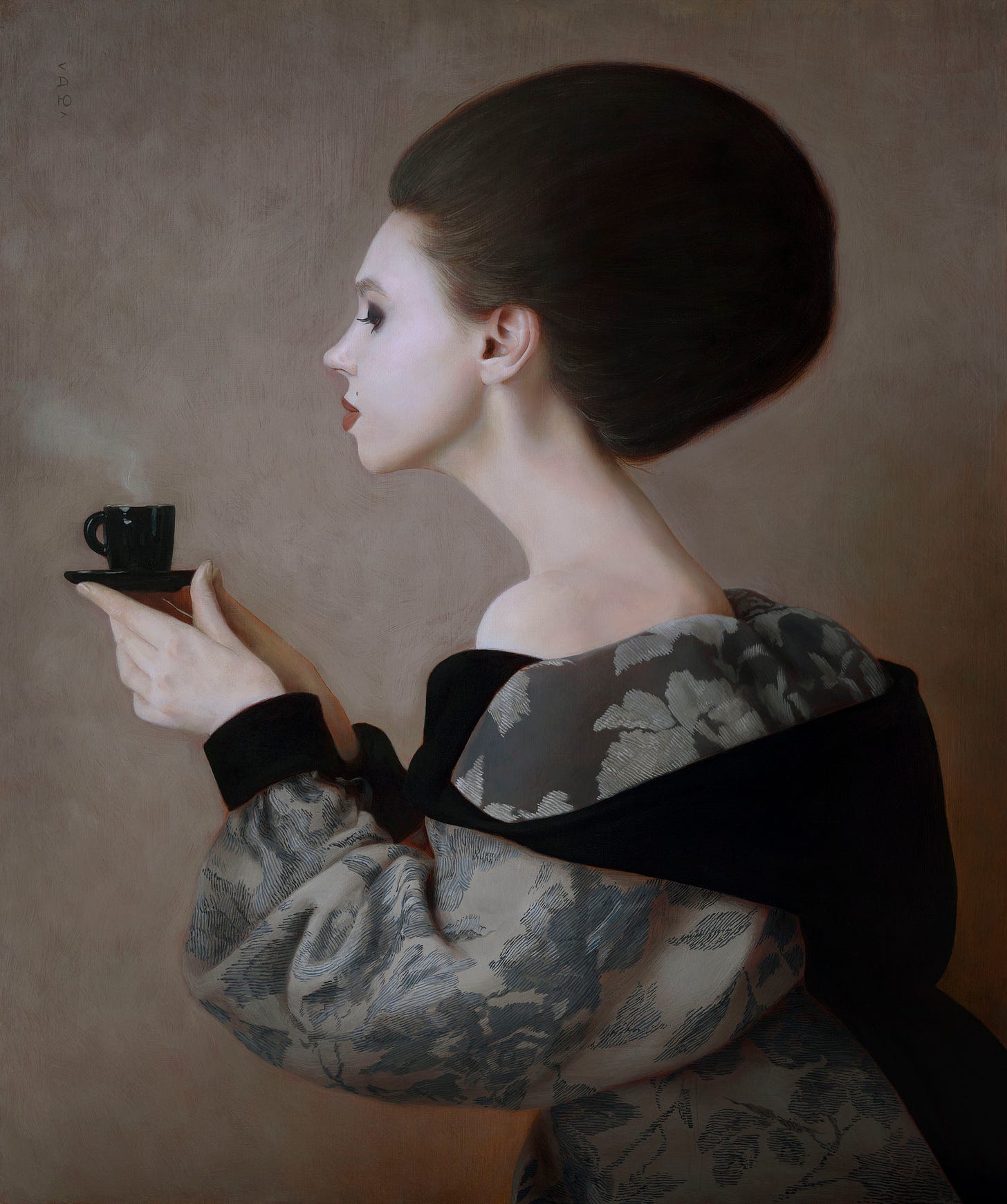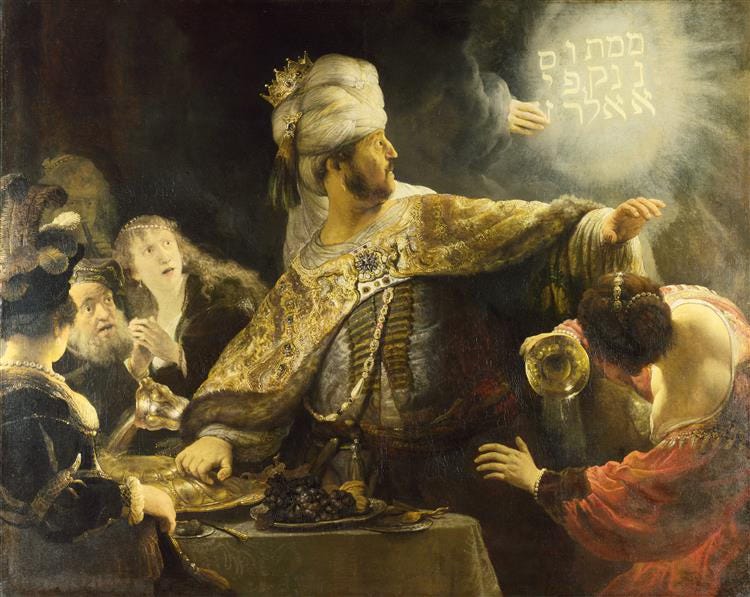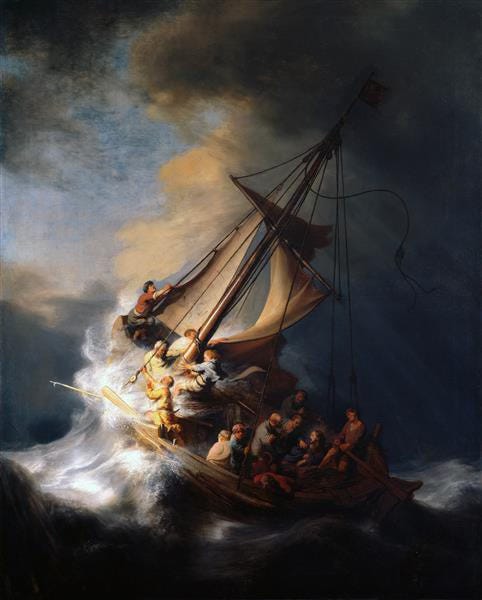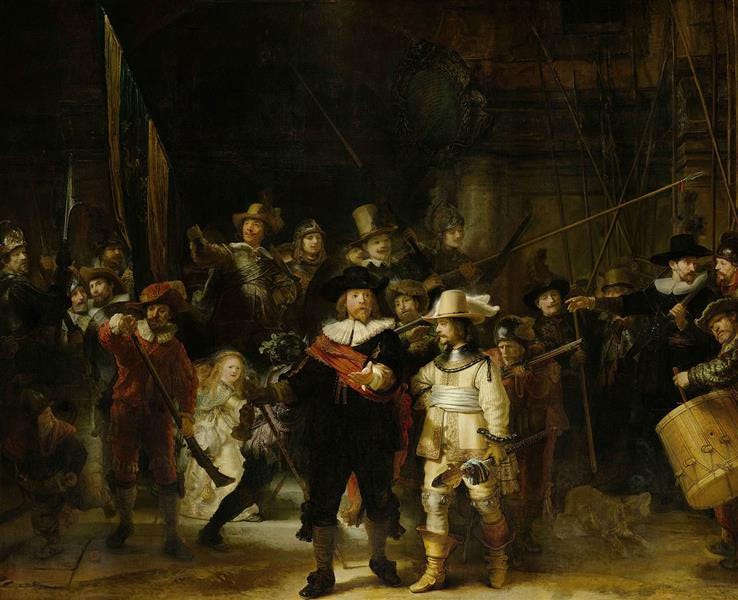Daria Dolgareva | Being creative means being unique.
"art has no limits and the path to perfection is a constant movement."
Introduction
Daria Dolgareva

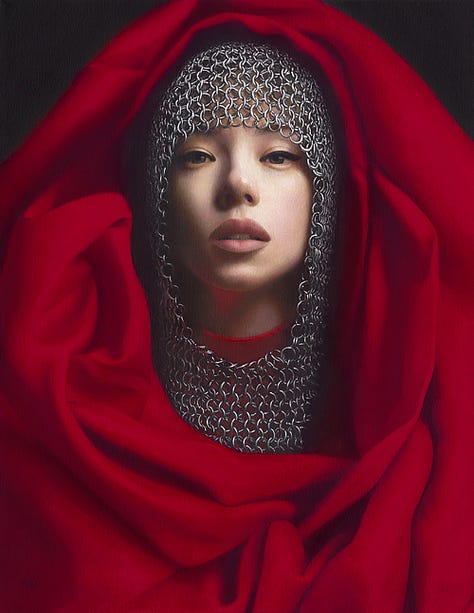
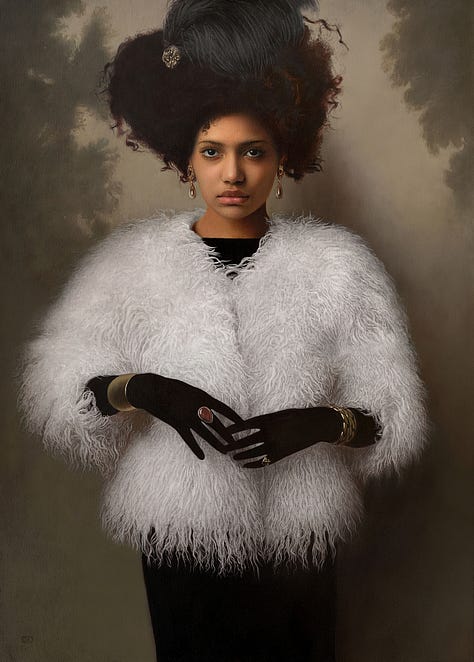
‘Daria Dolgareva (born in Russia, 1991) is an artist of portrait and figurative painting. Possessing a classical art education, at the age of 22 Daria delved into independent study of old-school painting technology. Her experience is based on copying the best masters of art, personal experiments, studying literature and museum collections.’
Daria Dolgareva’s - Website - Instagram
“My dream is to turn banality into drama”
Interview
How has studying museum collections and literature deepened your connection to your work?
During my childhood, my introduction to art began with books from our modest, family library. I have loved reading since childhood and used to spend my mornings reading volumes of historical memoirs and biographies. I love flipping through the pages of books to find out how prominent people got their start and what difficulties they went through. After reading many success stories, I noticed that these people had one thing in common - they truly loved what they were doing and that motivates me a lot.
The deeper I became immersed in art history and culture, the more meaningful my own work became. Most of my creative period was spent exploring the artistic expressiveness of great works, after which I reinforced my observations with experiments in my own work. I looked a lot at the paintings of old masters and copied them in order to understand the artistic techniques and in my own way reproduced these discoveries in my paintings.
When one delves into the work process of master artists, it helps to recognize expressive means that are not always on the surface. Such practice sharpens one's perception of art and allows one to find secrets to realize one's own ideas. But studying techniques can help you develop if you control yourself when doing academic assignments and clearly realize your goals, otherwise there is a risk of losing your own perception.
Now I don't just paint portraits, I create artistic images in which the past and the present, tradition and intuition overlap. I think nothing can be born from nothing and we learn to create by studying the discoveries of others - just as we learn to think by reading books. Trying to do something will be in vain if the artist has no material on which to work and from which to conceive. But in all this, it is very important not to fall into imitation, but to develop your own voice.
Who or what outside of the visual arts inspires you most—books, music, people?
In fact, many things inspire and move me forward: painting, the film industry, fashion, fashion illustration, photography. The mind is always alert and clings to every hint. I happen to find something new in the drawings of Michelangelo, Dürer and Fashion illustrator René Gruau. I can drown myself in the paintings of Rembrandt and Rubens, and afterward marvel at the collections of Christian Dior and Chanel. I found a lot of inspiration in the photographs of Paolo Roversi, Richard Avedon and Tim Walker. This is just a small list of people who inspire me. Each of them in their own way expressed themselves, their view of the world and emphasized details that others didn't give importance to. I don't have one single idol because I learn from each one separately.
Has your experience teaching people with different physical abilities changed your ideas about creativity or artistic expression?
The experience of working with visually impaired children and adults has had a profound impact on me as an artist and as a person. It changed not only my perception of teaching, but also my understanding of the nature of artistic expression. I realized that creativity is not so much a visual reproduction of reality, but rather a way of experiencing and communicating. Weak eyesight does not become a barrier to art - on the contrary, it makes it especially rich in inner content, frees it from excessive dependence on the external image, strengthens the sense of rhythm and imaginative thinking.
Working with these students, I have come to appreciate sensation and intuition more, qualities that are heightened when vision is limited. This experience has taught me to see more deeply and feel more honestly. It helped me to abandon patterns in teaching and to seek with each student his or her own personal language of expression. Today I am convinced that art is accessible to everyone - and that the most powerful images are born not from the perfection of vision, but from the power of inner experience. Even without a clear visual image, a person can create amazingly strong and touching works filled with meaning and inner light. Since then, I have come to more deeply appreciate the individuality of each student and to look for a personal story rather than a template in teaching.
How does your personal life or environment shape the art you create?
In my life, the boundaries between personal life and creativity are often blurred. Everything that happens outside the studio sooner or later makes its way inside the canvas. For many artists - myself included - art has become a way to make sense of reality, to structure chaos, to ask questions that cannot always be answered in words. My art is born on the border of reality and imagination - and my personal life is a great credit to that. One day, tired of everyday life became a starting point for me: I no longer wanted to simply convey reality, but to create it. Somy portraits have fictional backgrounds and extravagant hairstyles, unconventional costumes and a special palette - as if each character is in his or her own movie, where I am not just an artist, but a director.
My surroundings, my observations, even my personal experiences - all of this turns into images. The costumes I design and the props I make help me to bring out the best in a person, to convey the image more vividly and deeply. The environment influences not only the choice of themes, but also the way I work: some periods of life require silence and a restrained palette, while others require expression, luxury and bright color. Changes in relationships, in the city, in the sense of self - all of these are imperceptibly manifested in the paintings. Even the most fantastical images, even the most detached subjects have absorbed traces of the streets, books, and voices that surround me every day. This is not an autobiography in the literal sense - it is a biography of the world refracted through myself. So painting is not only about images, it is about feelings that were lived before they became visible.
Do you believe every object in a portrait needs to carry meaning, or can some things just be beautiful?
I don't believe that every element in a painting has to make sense. Sometimes the beauty itself becomes the content. It works like music: it doesn't need to be deciphered, but it evokes a feeling and resonates with the viewer. The artist is like a composer, not only to convey information, but also to create an atmosphere. In one portrait earrings can be a status symbol, in another - just a chord, shading the skin tone and creating a visual rhythm. Painting gives a unique freedom and opportunity to combine the meaningful with the intuitive. Sometimes the subject in a portrait speaks to the status or character of the model, sometimes to the inner world of the artist, and sometimes simply to the love of form, light and color.
Beauty can be a force in its own right, creating meaning even when it seems that its task is simply to please the eye.
Do you think burnout is inevitable for artists, or can it be prevented?
I don't consider burnout inevitable for an artist, but I recognize that it can be a turning point. I was once in this state myself: familiar images faded, inspiration seemed mechanical and every stroke seemed tedious. But it was at that moment that a new direction in my art was born. I began to create costumes - physical embodiment of those images that were previously only in my imagination. It wasn't just decoration, it became my way of bringing the idea to life and enhancing the character of the model. Burnout was not the end, but the beginning to a deeper, richer creativity. Since then, I've been convinced that if you approach burnout as a signal of change, it can be the beginning of the next creative chapter.
Art requires not only labor, but also inner clarity and sometimes even silence. Burnout occurs when a person loses touch for a long time with what nourishes his creative energy: his personal interest, his curiosity, his sense of meaning. Burnout can be prevented if you build your practice not as an endless marathon, but as a rhythmic breathing: alternating tension and recovery. One should allow oneself to watch, not only to create; to read for the soul, not only to analyze. Sometimes salvation can come from abandoning familiar subjects, a change of material, even a walk around the city. An artist is not a machine for producing content - he is a living, observing, experiencing person. And if we allow ourselves to be like that - with interruptions, doubts, and searches - we remain in contact with what we came to art for: to feel, to see, and to share this experience with others.
What does success mean to you as an artist?
The first success for me was the realization that I could see images. This gave me an inner core and a reference point for the direction I wanted to take. Since then I understand success as something more than external recognition. For me it is a well-realized idea embodied in a finished, expressive painting. For me, success is when the technique is subordinated to the idea, when I find the painting techniques that best convey my thought and inner vision. When color, composition, line and texture do not argue with each other, but work towards the same goal. I consider every work in which I manage to achieve this inner unity to be a small creative victory.
What’s the most challenging part of making art for you?
Sometimes the hardest thing to do is to finish a painting. The beginning is always full of inspiration and energy, when every line comes easily and the idea seems almost perfect. But then comes the moment when you need to put the final touch - and that's when the inner struggle begins. Finishing requires courage and trust: in your intuition, in your own voice and in the fact that the painting has already found its value. Finishing is one of the most delicate and difficult tasks in my work.
What’s a question you wished more people asked about your work?
I would like to hear the question more often: “What makes you keep searching and experimenting?”. This question is important to me because it is the essence of my creative journey. I truly believe that art has no limits and the path to perfection is a constant movement. I am inspired by the very process of exploration, finding new solutions, ideas and techniques. I love to discover beauty in different things. It is the desire to see and feel in a new way that keeps me going. Experimentation is not just a method, it is a way to continue to be passionate about my work and stay alive.
What’s one piece of advice you would give to aspiring creatives?
Truly love what you do and be creative. When I started my creative journey, I never thought about what it meant to be creative. Being creative means being unique. It can be described as the ability to pull yourself out of your own shell and put your efforts into finding a new angle, while having a deep belief in its correctness. In painting, perhaps as in science, to do it seriously you have to be inventive, otherwise you will just repeat boring formulas and nothing new will emerge.
Rembrandt 1606 - 1669
“Almost immediately after moving to Amsterdam in 1631, Rembrandt expanded his business; he became a burgess of Amsterdam and a member of the local guild of painters, acquired some students, and entered the lucrative market for portraiture – the genre for which he would become renowned …
By 1632, he was already demonstrating his versatility and impressive range. He produced mythological, biblical and allegorical scenes in addition to landscapes and portraits, both in paintings and etchings. He experimented with saturating large areas with color and intense chiaroscuro to achieve unprecedented levels of psychological character in his sitters, as well as dramatic interior and exterior scenes …
Despite his commercial and financial success, by the late 1640s, Rembrandt had overspent his fortune, could no longer pay his mortgage, and had to declare insolvency. He sold his house, many objects and paintings from his collection, and his printing press. He moved his family into a smaller home, and never financially recovered, eventually dying in poverty.” - Sotheby’s
Anyway, time to proceed with your day.
Big Love
Alex


